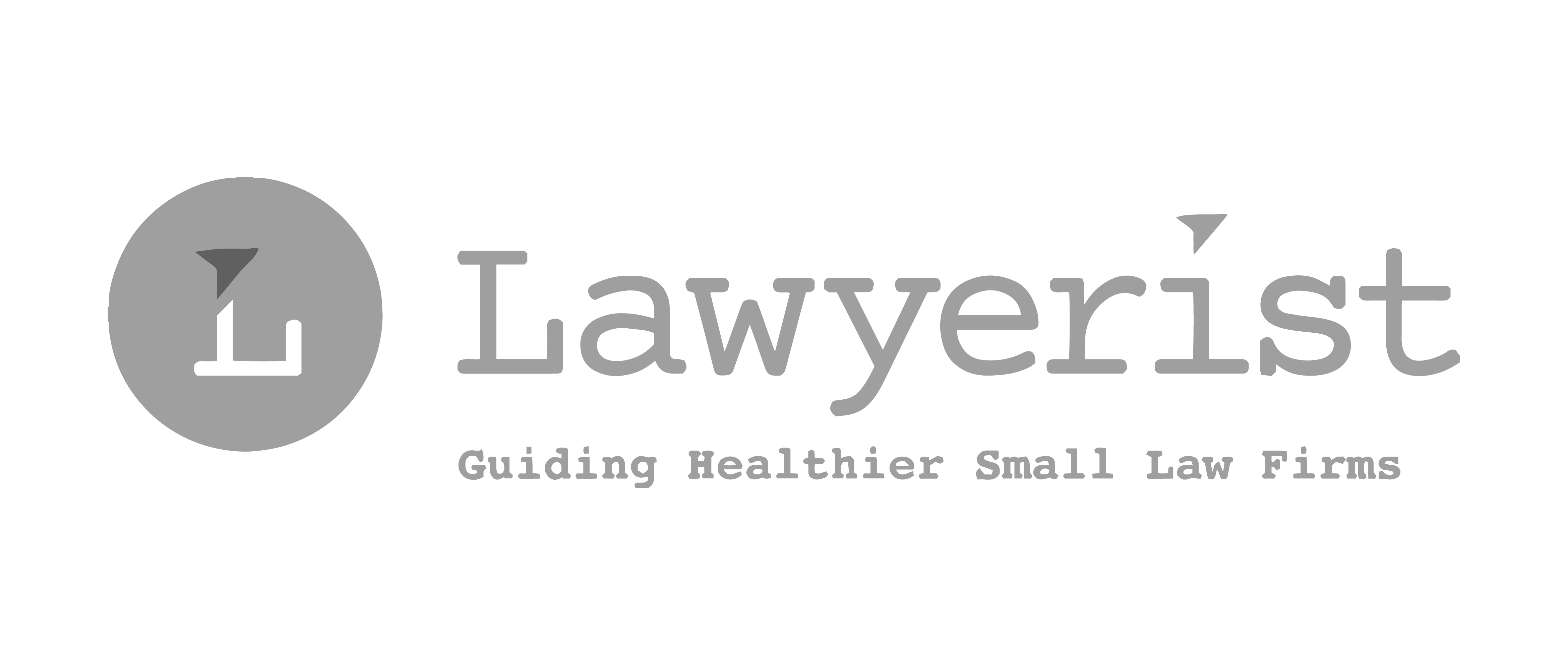How to Prepare for Using New Software in Your Legal Practice

No matter what generation you’re from, no matter how tech savvy you are, no matter which industry you’re in, switching software is challenging. That being said, embracing technology (and technology changes) hasn’t always come naturally to legal professionals. Law firms have historically been reluctant to adopt new technology.
Consider the following data: A 2020 ABA survey states that just 58% of firms store their data in the cloud, and only 7% of survey respondents used tools that deploy artificial intelligence (AI), despite AI’s popularity in other industries such as finance.
This reluctance poses a productivity and profitability risk for law firms. Failing to adopt efficiency- and productivity-boosting tools slows legal work and decreases client satisfaction. Thankfully, the tides are turning and more legal practices are embracing emerging tech tools to streamline their workloads.
If you’re in the same boat, you may wonder how to transform your law firm from old-school hanging file folders to cloud-based applications. With some planning, you can effortlessly migrate to new tools (or at least do so with minimal headache) and keep pace with the industry.
Keep reading to learn how to best prepare your legal practice to use new software.
Stats on law firms adopting new technology and benefits
While many law firms hesitated on technology for decades, the pandemic changed everything. Law firms were forced to adopt cloud-based systems if they wanted to continue practicing from home. Since 2020, the upward trend of law firms adopting new technology has continued. According to a study done by Wolters Kluwer:
- 77% of legal professionals say that the increasing importance of legal technology is one of the top two trends to impact their organization.
- 63% of law firms plan to increase their technology investment.
Of these technology investments, firms plan to adopt innovative tools to benefit their firms and reduce busy work. Law firms want to change how services are delivered to improve productivity, offer more specialized services, collaborate better with each other (all those remote workers still need to communicate with their on-premises teammates), and better client transparency.
To do so, law firms are looking to implement technology like:
- E-signature
- Document and contract creation automation
- Workflow management
- Cloud-based services
Typical challenges to implementing new software
The services above may have piqued your interest for your law firm. E-signature, for example, makes it much easier for clients to send signed documents back to you. Instead of waiting for days, they can do it in mere minutes.
But before you get too excited and start planning out what you’re going to do with your new-found billable hours, it’s good to think through the common challenges of adapting new software to prepare for them at your firm.
Organizational resistance
Most lawyers have a full schedule—the last thing your team wants is to learn a new software program. Plus, if tools cost extra money, stakeholders may deny purchasing any new products because they don’t understand how much money the software saves them in the long run.
To combat organizational resistance, esearch software case studies to share with your team and outline benefits in actionable bites for stakeholders.
Show your team case studies about the software that highlight similar issues your firm has. If everyone sees a first-hand scenario of how the software made someone else’s job easier, they’ll be more willing to learn and adopt it themselves.
For stakeholders, take some bullet points from case studies and outline them in an easy-to-read document. Offer links to the case studies for further reading, but high-level management doesn’t usually have the time. They just want to know exactly how it will benefit their bottom line.
No tech background
Many lawyers, paralegals, and legal assistants haven’t developed the necessary skills or experience to adopt sophisticated tech. Instead of making their day better, confusing software only discourages them and costs more billable hours.
Choose tools that offer robust training and support options to assist your team without a tech background.
Many legal practice management systems offer unlimited support and free training. Schedule a day for everyone to go through a training seminar and learn the tools needed to use the software.
Another option: consider hiring a specialist for a day to hold an in-person workshop and answer personal questions for your team. This will help them feel confident and establish the background your team needs to be successful.
Financial barriers
Law firms need technology to support various needs: time tracking, billing, marketing, accounting, project management, payments, etc. But if you’ve got a tight software budget, you’ll be surprised at how quickly costs can add up when you’re piecemealing your tech stack. Adopting numerous programs can eat up your budget before you finish purchasing all the necessary tools for your tech stack.
To save money, use a subscription-based tool that offers everything you need in one platform.
Looking for a platform that integrates all your needs into one service saves you money—and a lot of tech stack juggling. What’s more, when you use a subscription service, you can cancel it anytime (though be sure to read the fine print) if you don’t like it. This means you aren’t buying thousands of dollars of software upfront for a tool that doesn’t ultimately serve your needs.
Steps to take to prepare for using a new software
Any time you implement a change in your life, you need to plan how it will improve what you currently have. Bringing on new software is no different. Follow these steps to prepare your team.
Have a plan for using it
First, you need to identify the problems at your workplace that the software fixes.
If you constantly create documents riddled with errors, document automation merges client information stored elsewhere on your computer into legal documents. If you struggle with receiving client signatures on time, secure file-sharing and e-signature software allows clients to sign documents securely on their smartphones from anywhere.
Once you know what you need, map out a strategy and timeline for how you’ll implement the software. Create an internal guide outlining how the software solves problems for your law firm. Put all the major dates for software adoption into a calendar, so you leave plenty of time to teach the software before it’s expected to be implemented.
Get everyone on board
After you’ve created your strategy, share it with your team. Open up the conversation for your team’s concerns and questions regarding the timeline, and make changes as needed to help them feel more comfortable. If the whole firm feels like they’ve been able to address concerns and provide feedback about the tools, they’ll be much more likely to adopt them in the future.
Set up a training program
Plan for an in-depth training session before officially rolling out your new software. Set up breakout groups for specific people or departments who need specialized training for their roles. Everyone will use the software differently, so a one-size-fits-all approach to training won’t work.
Anticipate questions coming up even after a training program. It’s common for team members to take some time to feel comfortable, so provide regular support. Send out a staff newsletter or schedule one-on-one employee check-ins with the program specialist so they can address any recent concerns.
Map out processes and workflows ahead of time
Utilize task management software to plan processes and workflows with the new software. Create task templates so that whenever a particular type of document or contract needs to be completed, you can duplicate the template and customize them for a specific client’s needs.
Be patient
Learning something new takes time. Once you see the results in your bottom line and your employees see how much quicker menial tasks take every day, you’ll be grateful for the software change.
Adopt all the legal tech you need in one place with Rocket Matter
Instead of piecing together a bunch of different tools in your tech stack, spend time learning one software that does it all. Rocket Matter’s robust legal practice management software offers all the critical legal tools you need to streamline tedious work at your law firm, including
- Document automation
- Time tracking
- Legal billing
- Online payments
- Legal trust accounting
- Task management
If you’re ready to adopt one software to meet all the tech needs of your law firm, schedule a demo with Rocket Matter today.
Share post:








